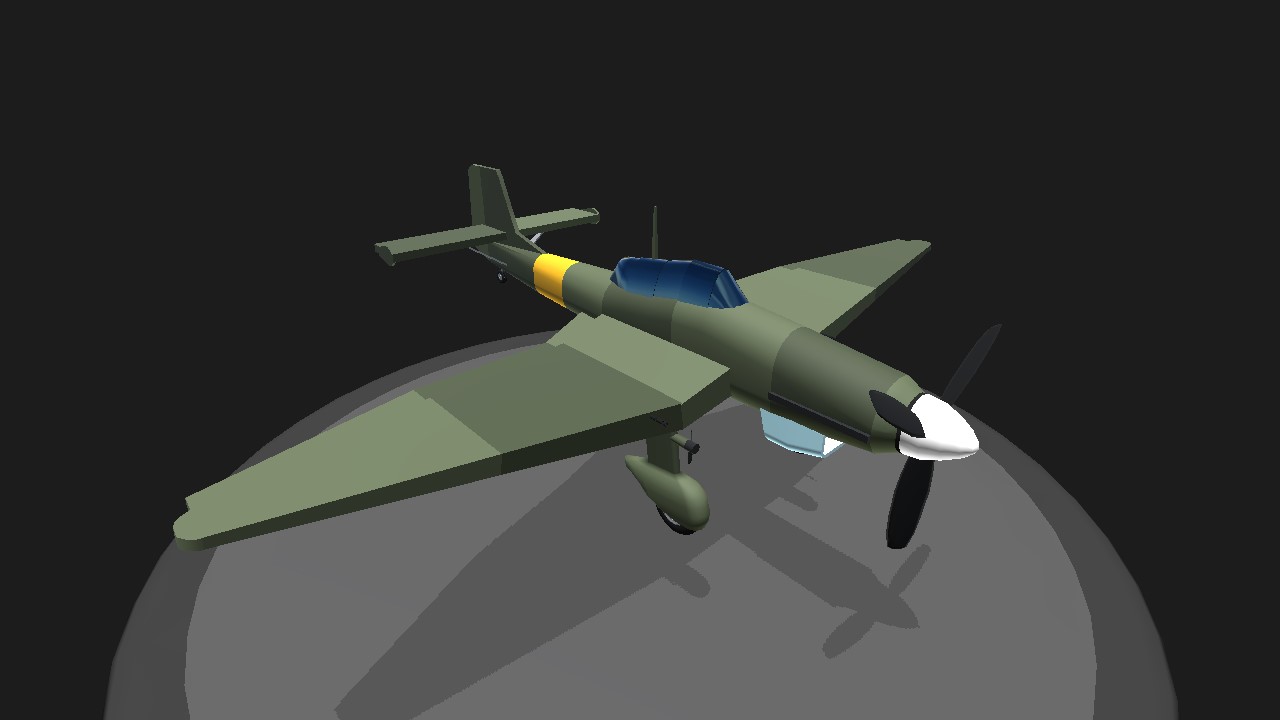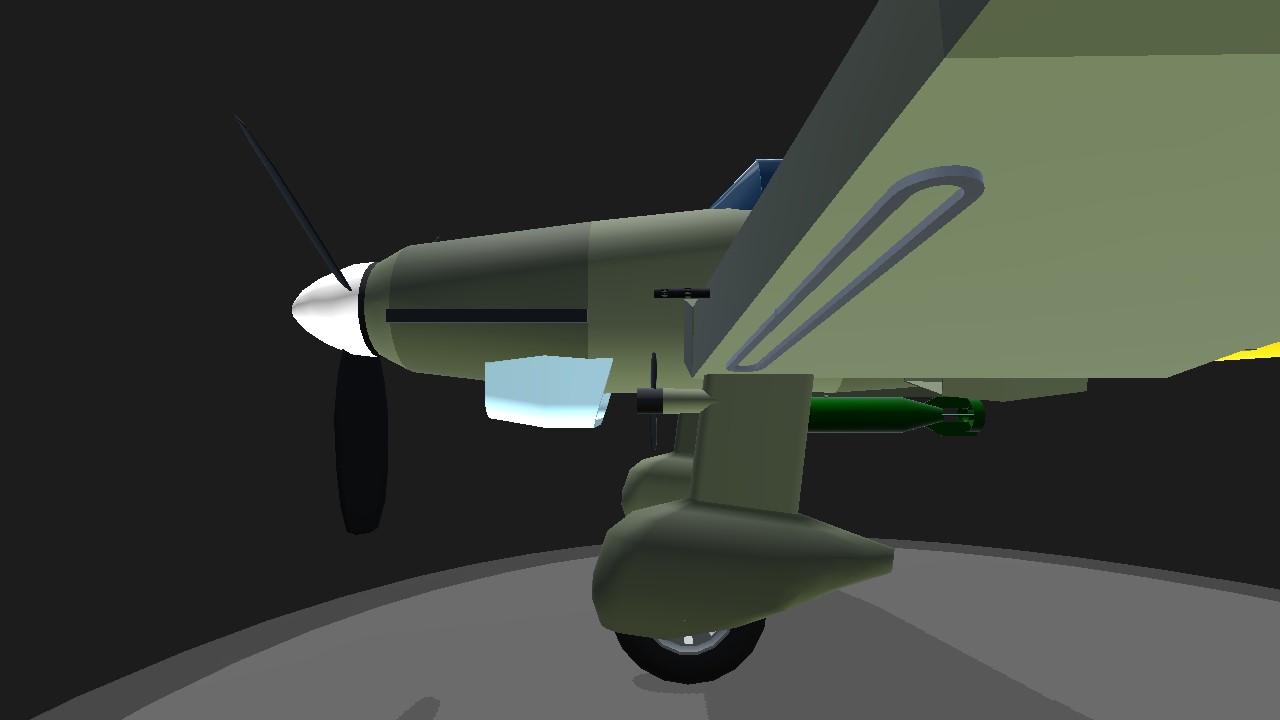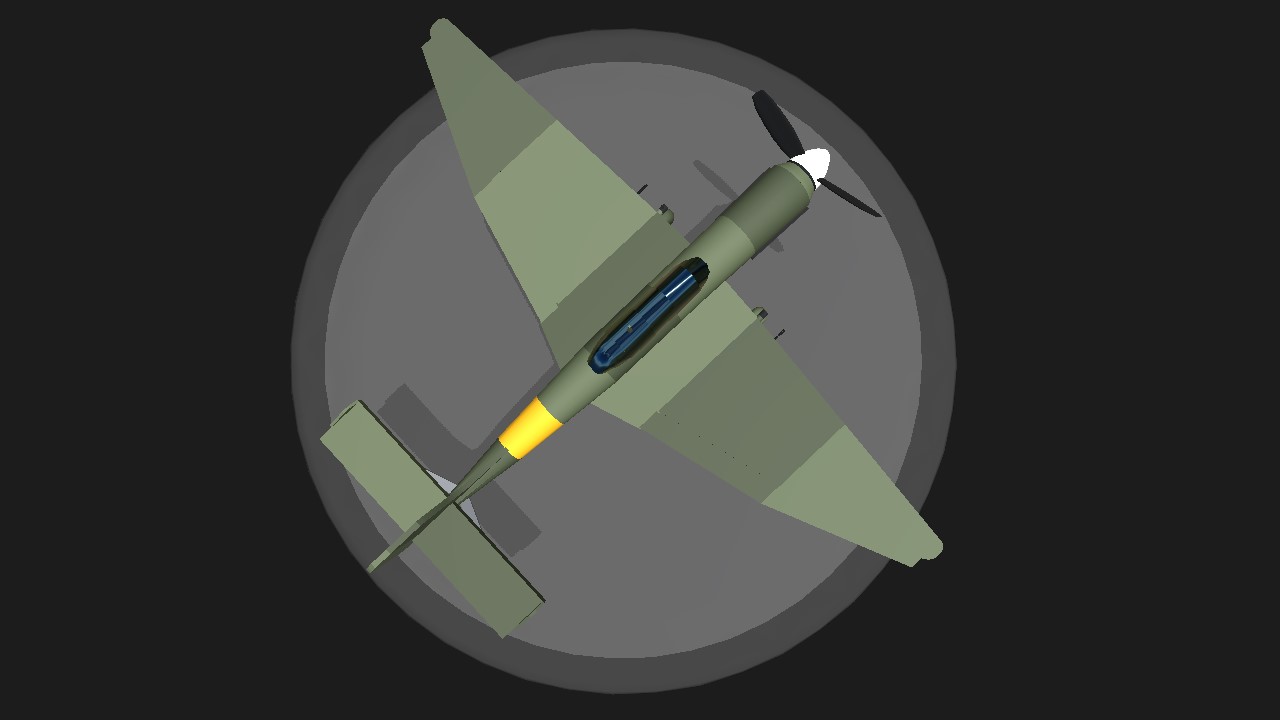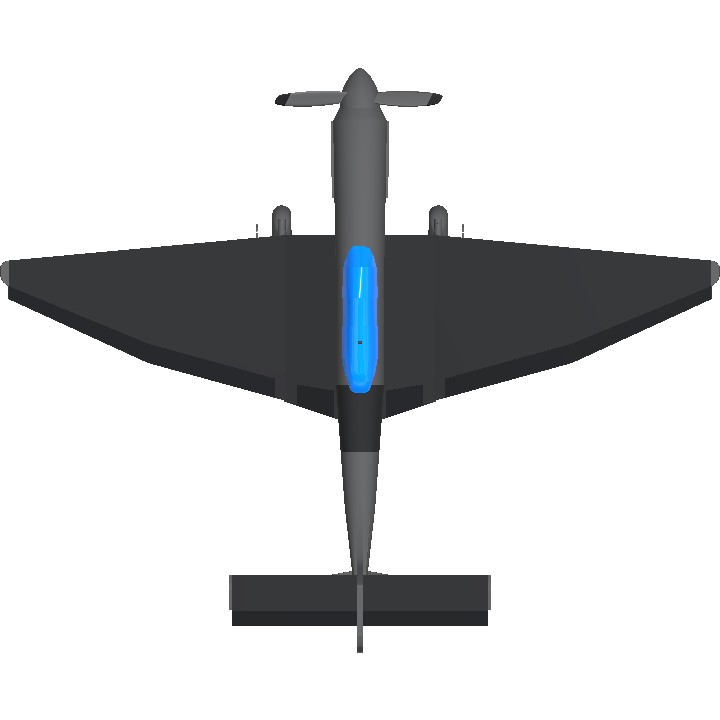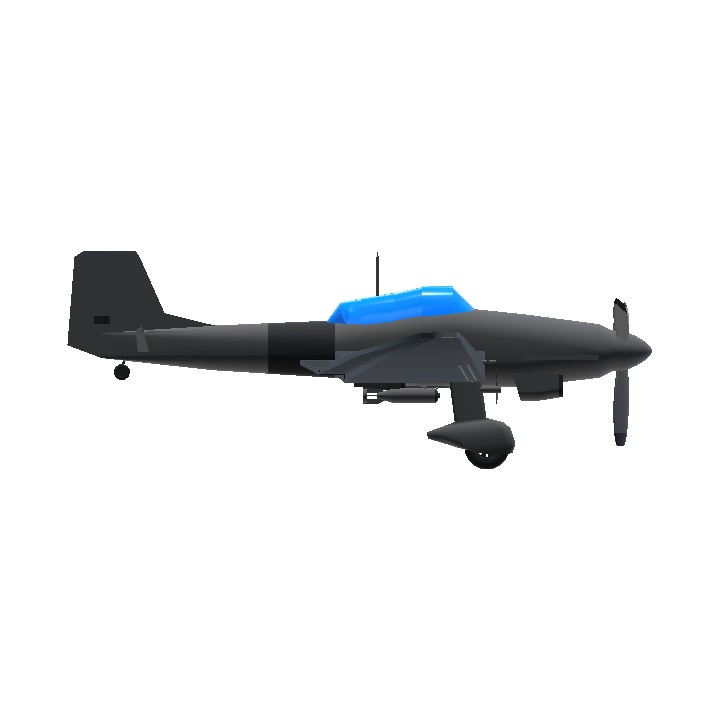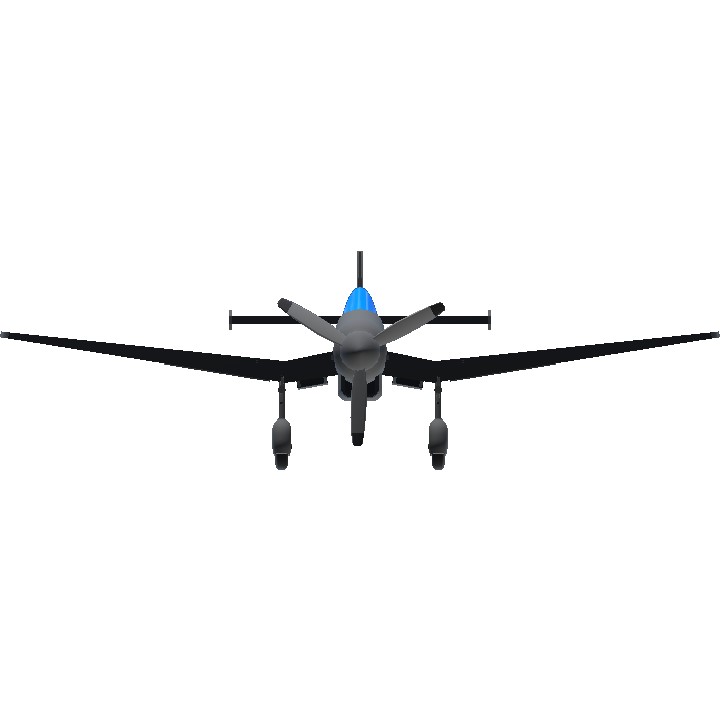Goin' Divin' For Real~
Junkers Ju 87 Stuka
The Junkers Ju 87 Stuka is arguably one of the most recognizable and iconic aircraft of World War II. More than just a dive bomber, it became a symbol of the Blitzkrieg, instilling fear in the hearts of Allied soldiers and civilians alike. Its distinctive gull wings, fixed landing gear, and the terrifying "Jericho Trumpet" sirens created a unique and intimidating presence on the battlefield. Let's delve into the history, design, operational service, and legacy of this notorious aircraft.
Designed by Hermann Pohlmann, the Ju 87's development began in the early 1930s as part of the Luftwaffe's efforts to create a dedicated close air support platform. The initial prototypes, built in Sweden due to restrictions imposed by the Treaty of Versailles, were plagued with issues. However, the designs were refined and improved, culminating in the Ju 87A, which saw limited service in the Spanish Civil War.
The most famous variant, the Ju 87B, entered production shortly after the war began. Key design features included:
Inverted Gull Wings: These provided excellent visibility for the pilot during dive bombing, allowing for precise targeting.
Fixed Landing Gear: While not aerodynamically efficient, the sturdy fixed landing gear was ideal for operating from rough or improvised airfields close to the front lines.
Dive Brakes: These were crucial for controlled and accurate dive bombing. Extending from the underside of the wings, they prevented the aircraft from exceeding its maximum speed during the descent.
Automatic Dive Pull-Up System: A system that automatically leveled the aircraft after the bomb release, freeing the pilot to escape the target area and minimizing the risk of crashing during pull-out.
Pilot and Radio Operator/Rear Gunner Crew: The pilot focused on flying and targeting, while the rear gunner defended the aircraft from enemy fighters.
"Jericho Trumpet" Sirens (Optional): Mounted on the landing gear, these sirens created a terrifying wailing sound during the dive, intended to demoralize enemy troops. While effective psychologically, they also increased drag and were eventually removed from later models.
Subsequent variants included the Ju 87C (navalized for carrier operations, ultimately unsuccessful), the Ju 87D (improved engine and armour), the Ju 87G (tank buster equipped with 37mm Flak 18 cannons under the wings), and the Ju 87H (trainer).
The Ju 87 earned its fearsome reputation during the early years of World War II, playing a key role in the Blitzkrieg tactics used in the invasions of Poland, France, and the Low Countries. Its precision dive bombing capabilities allowed it to destroy enemy defenses, disrupt supply lines, and break enemy morale. Flying ahead of the advancing Panzers, the Stukas cleared the path, creating chaos and panic among the defending forces.
In the Battle of Britain, however, the Ju 87's limitations were exposed. Slow and lacking in maneuverability, it proved to be easy prey for British fighters like the Spitfire and Hurricane. Heavy losses forced the Luftwaffe to withdraw the Stuka from the skies over Britain.
Despite its vulnerability to fighters, the Ju 87 continued to serve effectively on the Eastern Front and in the Mediterranean Theatre. In these theaters, the Luftwaffe often had air superiority, allowing the Stuka to operate with relative safety. It proved particularly effective against Soviet tanks, especially in the later stages of the war when equipped with cannons.
As the war progressed and Allied air power increased, the Ju 87 became increasingly vulnerable. It was gradually replaced by more modern aircraft, such as the Focke-Wulf Fw 190 and ground attack versions of the Messerschmitt Bf 109. However, it continued to serve in diminishing numbers until the end of the war.
The Junkers Ju 87 Stuka holds a complex place in history. While undeniably effective in its intended role, it is also associated with the brutality and terror of the early years of World War II. Its distinctive appearance and the psychological impact of its sirens made it a symbol of German military might. It demonstrated the power of precision air strikes in a time when such capabilities were still in their infancy. Today, only a handful of Ju 87s survive, serving as reminders of a pivotal period in aviation and military history.
Possible aircraft nicknames, based on its characteristics and reputation:
"Screaming Eagle/Screaming Death": Referring to the Jericho Trumpet sirens and the overall effect of the aircraft on its targets. Likely a common suggestion due to its obvious association with the sound.
"The Bonebreaker": A more brutal reference to the structural stress the aircraft endured during dive bombing maneuvers. Also hints at the Stuka’s ability to shatter defenses.
"Iron Gustav": Combining the "Ju" from Junkers with a typical German first name, giving it a personalized and somewhat intimidating feel.
"Dive Bomber Dave": (Humorous) A simple, alliterative, and somewhat lighthearted nickname suggesting a commonality or even a casual approach to its use. Could be used sarcastically.
"Stuka-Do": A play on words utilizing the aircraft's name and the word "do," implying ease of usage or effectiveness, possibly with a sarcastic undertone due to its vulnerability later in the war.
"The Gull": A simple nickname based on its distinctive gull wing shape.
"The Flying Coffin": Reflecting high loss rates later in the war when facing improved Allied fighters. A grim, but accurate, descriptor.
"Panzer Breaker": Especially relevant to the Ju 87G variant armed with anti-tank cannons.
"Blitzkrieg Bird": Highlighting its role in the early successes of the German war machine.
"The Klaxon": Simplifying its identifier to one of its primary functions, the loud and terrifying sirens.
- About the variant
Ju 87D-x
Despite the Stuka's vulnerability to enemy fighters having been exposed during the Battle of Britain, the Luftwaffe had no choice but to continue its development, as there was no replacement aircraft in sight. The result was the D-series. In June 1941, the RLM ordered five prototypes, the Ju 87 V21–25. A Daimler-Benz DB 603 powerplant was to be installed in the Ju 87 D-1, but it did not have the power of the Jumo 211 and performed "poorly" during tests and was dropped. The Ju 87 D-series featured two coolant radiators underneath the inboard sections of the wings, while the oil cooler was relocated to the position formerly occupied by the single, undernose "chin" coolant radiator. The D-series also introduced an aerodynamically refined cockpit with better visibility and space. Armour protection was increased and a new dual-barrel 7.92 mm (.312 in) MG 81Z machine gun with an extremely high rate of fire was installed in the rear defensive position. Engine power was increased again, the Jumo 211J now delivering 1,420 PS (1,044 kW or 1,400 hp). Bomb carrying ability was nearly quadrupled from 500 kg (1,100 lb) in the B-version to 1,800 kg (4,000 lb) in the D-version (max. load for short ranges, overload condition), a typical bomb load ranged from 500–1,200 kg (1,100–2,600 lb).
Ju 87Ds, Soviet Union, January/February 1943
The internal fuel capacity of the Ju 87 D was raised to 800 L (of which 780 L were usable) by adding wing tanks while retaining the option to carry two 300 L drop tanks. Tests at Rechlin-Lärz Airfield revealed it made possible a flight duration of 2 hours and 15 minutes. With an extra two 300 L (80 US gal) fuel tanks, it could achieve four hours flight time.
The D-2 was a variant used as a glider tug by converting older D-series airframes. It was intended as the tropical version of the D-1 and had heavier armour to protect the crew from ground fire. The armour reduced its performance and caused the Oberkommando der Luftwaffe to "place no particular value on the production of the D-2". The D-3 was an improved D-1 with more armour for its ground-attack role. Some Ju 87 D-3s were designated D-3N or D-3 trop and fitted with night or tropical equipment. The D-4 designation applied to a prototype torpedo-bomber version, which could carry a 750–905 kg (1,653–1,995 lb) aerial torpedo on a PVC 1006 B rack—this setup would have had the capacity to carry the Luftorpedo LT 850, the German version of the well-proven Japanese Type 91 aerial torpedo of 848 kg (1,870 lb). The D-4 was to be converted from D-3 airframes and, in place of the carrier-specific Ju 87C series designs, operated from the aircraft carrier Graf Zeppelin. Other modifications included a flame eliminator and, unlike earlier D variants, two 20 mm MG 151/20 cannon, while the radio operator/rear gunner's ammunition supply was increased by 1,000 to 2,000 rounds.
The Ju 87 D-5 was based on the D-3 design and was unique in the Ju 87 series as it had wings 0.6 metres (2 ft) longer than previous variants. The two 7.92 mm MG 17 wing guns were exchanged for more powerful 20 mm MG 151/20s to better suit the aircraft's ground-attack role. The window in the floor of the cockpit was reinforced and four, rather than the previous three, aileron hinges were installed. Higher diving speeds were obtained of 650 km/h (400 mph) up to 2,000 m (6,600 ft). The range was recorded as 715 km (444 mi) at ground level and 835 km (519 mi) at 5,000 m (16,000 ft).
The D-6, according to "Operating instructions, works document 2097", was built in limited numbers to train pilots on "rationalised versions". Due to shortages in raw materials, it did not go into mass production. The D-7 was another ground attack aircraft based on D-1 airframes upgraded to D-5 standard (armour, wing cannons, extended wing panels), while the D-8 was similar to the D-7 but based on D-3 airframes. The D-7 and D-8 were both were fitted with exhaust flame dampers, and could conduct night operations.
Production of the D-1 variant started in 1941 with 495 ordered. These aircraft were delivered between May 1941 and March 1942. The RLM wanted 832 machines produced from February 1941. The Weserflug company was tasked with their production. From June to September 1941, 40 Ju 87 Ds were expected to be built, increasing to 90 thereafter. Various production problems were encountered. One of the planned 48 was produced in July. Of the 25 the RLM hoped for in August 1941, none were delivered. In September did the first two of the planned 102 Ju 87s came off the production lines.[66] The shortfalls continued to the end of 1941. During this time, the WFG plant in Lemwerder moved production to Berlin. Over 165 Ju 87s had not been delivered and production was only 23 Ju 87 Ds per month out of the 40 expected. By the spring of 1942 to the end of production in 1944, 3,300 Ju 87s, mostly D-1s, D-2s and D-5s had been manufactured.
In January 1943, a variety of Ju 87 Ds became "test beds" for the Ju 87 G variants. At the start of 1943, the coastal Luftwaffe Erprobungsstelle test centre at Tarnewitz tested this combination from a static position. Oberst G. Wolfgang Vorwald noted the experiments were not successful, and suggested the cannon be installed on the Messerschmitt Me 410. Testing continued, and on 31 January 1943, Ju 87 D-1 W.Nr 2552 was tested by Hauptmann Hans-Karl Stepp near the Briansk training area. Stepp noted the increase in drag, which reduced the aircraft's speed to 259 km/h (161 mph). Stepp also noted that the aircraft was also less agile than the existing D variants. D-1 and D-3 variants operated in combat with the 37 mm (1.5 in) BK 37 cannon in 1943.
C O N T R O L S
Trim : Flaps, cruising 'rotate' adjuster
VTOL : Further flaps
Specifications
General Characteristics
- Created On Android
- Wingspan 46.2ft (14.1m)
- Length 37.5ft (11.4m)
- Height 14.0ft (4.3m)
- Empty Weight 9,301lbs (4,219kg)
- Loaded Weight 12,598lbs (5,714kg)
Performance
- Horse Power/Weight Ratio 0.547
- Wing Loading 23.6lbs/ft2 (115.4kg/m2)
- Wing Area 532.8ft2 (49.5m2)
- Drag Points 1102
Parts
- Number of Parts 95
- Control Surfaces 9
- Performance Cost 632

